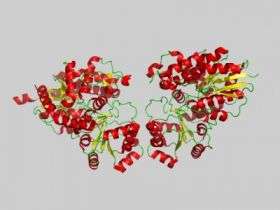Plants can be used to study how and why people respond differently to drugs

While prescription medications work successfully to cure an ailment in some people, in others the same dose of the same drug can cause an adverse reaction or no response at all.
According to a research team led by Sean Cutler, an assistant professor of plant cell biology at UC Riverside, such variation in drug responses can be analyzed by studying much simpler organisms – like plants.
“The genetics behind variable drug responses is not peculiar to humans but exists also in other branches on the tree of life,” Cutler said. “We can harness simple organisms to understand more about the genetics and biochemistry of variable drug responses, which could help uncover new factors that contribute to variable drug responses in humans.”
Study results appear in the Sept. 23 online publication of Nature Chemical Biology.
Focusing on Arabidopsis thaliana, a weedy plant in the mustard family, Cutler’s lab discovered a key protein in the plant that creates drug resistance. Called UGT (UDP-glycosyltransferase), the protein is a member of a family of proteins that also affect drug sensitivity in humans.
“Similar biochemical processes are affecting drug sensitivity in both plants and animals,” said Cutler, who joined UCR’s Department of Botany and Plant Sciences and the Center for Plant Cell Biology in January 2007. “These similarities suggest that plants can be useful for studying problems of human interest like drug responses.”
In their research, Cutler and his research team first screened and tested thousands of drug-like compounds in the lab as they searched for new inhibitors of plant growth. In the process, they discovered a new molecule, called hypostatin, which acts like a drug in inhibiting plant growth in some Arabidopsis plants.
At the same time, the researchers grew Arabidopsis plants in a solution containing hypostatin, which allowed the plant cells to take up hypostatin.
Cutler and his team found that the plants’ UGT activates hypostatin by adding a sugar molecule to it. They also found that in plants that had a genetically defective UGT, hypostatin did not work properly because no sugar molecules – necessary for activating hypostatin – were added to it; in such plants, therefore, growth was not affected.
“This mechanism is very similar to that seen in humans, where altered drug sensitivity can occur because of defective or atypical sugar-tagging proteins,” Cutler said.
His lab made the discovery as part of its ongoing research aimed at identifying and characterizing new bioactive compounds in plants. Next in their research, Cutler and his colleagues plan to expand their search for other sugar-activated molecules, like hypostatin.
Source: University of California - Riverside
















